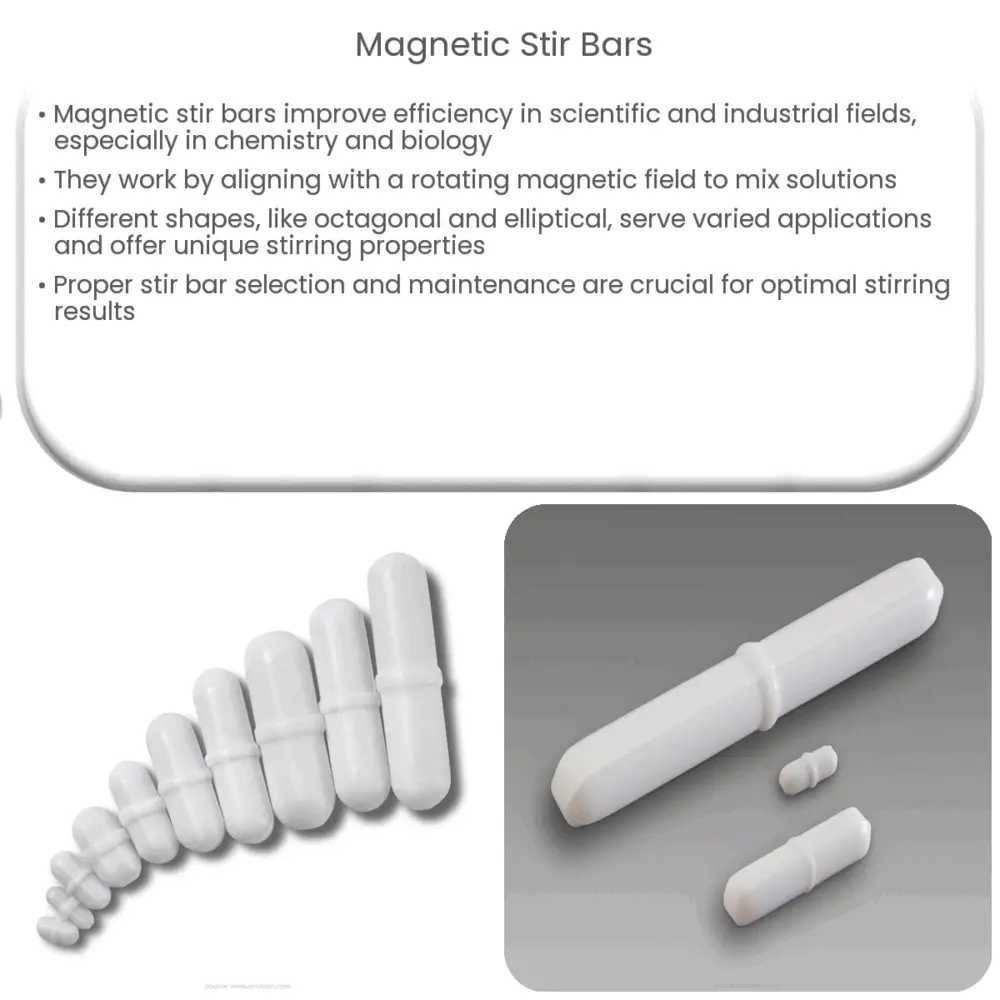Explore the fascinating world of magnetic stir bars: their function, types, applications, care guidelines, and future potential.

Understanding Magnetic Stir Bars
Science and technology have always found a way to improve efficiency and productivity, and the invention of the magnetic stir bar is a perfect example of this. The simple yet effective device is indispensable in many scientific and industrial fields, especially in the realms of chemistry and biology.
So, what is a magnetic stir bar? A magnetic stir bar, also known as a flea, is a small magnet that is coated in a material typically not reactive to chemicals, such as PTFE (polytetrafluoroethylene). The stir bar is usually placed in a liquid solution to provide a stirring action when subjected to an external rotating magnetic field.
The Working Principle of Magnetic Stir Bars
The working principle of magnetic stir bars is quite straightforward and rooted in the fundamental concept of magnetism. The stir bar inside the container (beaker or flask) aligns itself along with the rotating magnetic field produced by an external device, typically known as a magnetic stirrer or magnetic stir plate. As the stirrer rotates, the magnetic stir bar follows the motion, creating a vortex in the liquid, thus mixing or stirring the solution efficiently.
Types of Magnetic Stir Bars
- Octagonal Magnetic Stir Bars: These have added turbulence compared to round stir bars. Their shape makes them suitable for a wide range of applications.
- Round (Cylindrical) Magnetic Stir Bars: They provide excellent centering and smooth running, ideal for general mixing applications.
- Pivot Ring Magnetic Stir Bars: These stir bars are designed with a pivot ring that ensures reduced friction and better stirring action. They are ideal for round-bottomed flasks.
- Elliptical (Oval) Magnetic Stir Bars: These bars offer strong turbulence at relatively low speeds, and their elliptical shape ensures they do not “wobble” or “spin out” during use.
It’s worth mentioning that selecting the appropriate type of stir bar greatly impacts the efficiency of stirring. Factors such as the size and shape of the container, the volume and viscosity of the liquid, and the required mixing speed should be considered when choosing a magnetic stir bar.
Applications of Magnetic Stir Bars
Magnetic stir bars have a multitude of applications, ranging from research laboratories to industrial settings. They are predominantly used in:
- Chemical Synthesis: In chemical labs, they help maintain an even and consistent mix of different components, facilitating precise chemical reactions.
- Biological Research: They are used in biological studies to stir cultures, ensuring that nutrients are evenly distributed throughout the culture medium.
- Pharmaceutical Industries: Magnetic stir bars help in the production and quality control of pharmaceuticals by ensuring homogeneous mixing of ingredients.
- Food and Beverage Industries: They are employed to maintain a uniform mix of ingredients, enhancing the consistency and quality of the end product.
Care and Maintenance of Magnetic Stir Bars
Magnetic stir bars, despite their robustness, require appropriate care and maintenance to ensure their longevity and maintain their efficiency. After each use, they should be cleaned with suitable solvents and then rinsed with distilled water. Ultrasonic cleaning can be performed for intensive cleaning. Drying should be done carefully to prevent any damage to the protective coating. Moreover, stir bars should not be exposed to extreme temperatures, as it might lead to demagnetization.
Advancements and Future Directions
The future of magnetic stir bars is indeed promising. Ongoing research in the field of material science is set to create stir bars that are more resistant to chemicals and heat, and have improved magnetic properties. Furthermore, advancements in stirrer designs might allow for more precise control over the speed and pattern of stirring, enabling more accurate and sophisticated mixing and reactions.
Conclusion
In conclusion, magnetic stir bars are simple yet effective tools in stirring and mixing applications in various fields. Their versatility, efficiency, and ease-of-use make them a staple in any laboratory or industry dealing with liquid solutions. By understanding the types and proper use of magnetic stir bars, scientists and technicians can better equip themselves to carry out accurate and consistent experiments or processes. As advancements continue to unfold, we can only expect the utility and efficiency of these stir bars to increase, further underlining their importance in scientific and industrial processes.

